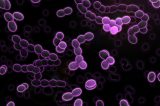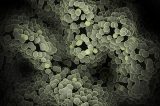The New Winemaking Update – Organic Version: Copper sulfate use in organic vineyards – are wine yeast and bacteria affected by this fungicide?
In 2017, the organic vineyard areas had tripled in 10 years and approximately 5% of worldwide vineyards are now under organic certifications. For organic growers, who cannot use other fungicide sprays, copper sulfate is still an effective tool against downy mildew. With the increased production of organic vineyards in the world, the use of this
fungicide has also grown with the expansion of this type of farming.
It is known that elevated concentrations of this metal can be toxic to yeasts and bacteria. Our results have shown that wine yeast and bacteria do not appear to be significantly affected by Cu concentrations higher than 15 mg/L, except in the case of malolactic fermentation in white wines, where concentration > 7.5 mg/L can impact the MLF. High pH and high Cu concentrations can impact wine yeast viability and lag phase.
To read more about this topic, please consult our Winemaking Update - Organic Version
WUP Organic 2020 Cu- ENG LR



